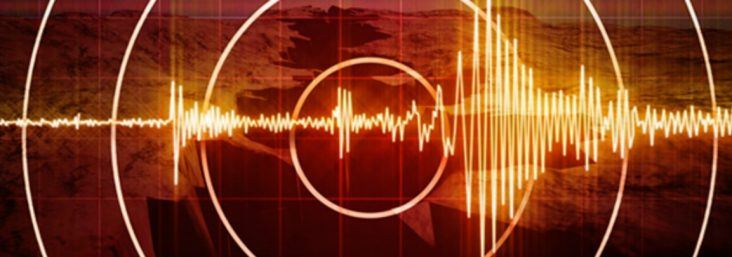ASU moves forward with disaster training facilities
by February 14, 2019 4:57 pm 398 views

One of the worst earthquake sequences ever recorded in North America started at 2 a.m. On Dec. 16, 1811. The quake, up to 8.2 on the Richter Scale was centered three miles underneath the ground in present-day Blytheville, according to geologists. A series of more powerful earthquakes followed in the coming months centered near New Madrid, Mo. The rattling earth was so strong, it was reported to have moved church bells in New England and re-routed the Mississippi River.
Little damage was caused in Arkansas when the initial quake struck due to the fact that few people lived in the region. That’s not the case anymore and geologists agree on one thing – it’s not if another quake will strike the New Madrid Fault Zone that ends in Marked Tree, Ark., it’s a matter of when it will strike.
Arkansas State University, in a collaborative effort with the cities of Walnut Ridge and Imboden, plans to build disaster training facilities. ASU signed two leases, one for an 183-acre swath in Imboden and another 180-acre tract in the Walnut Ridge Industrial Park, to build these training facilities, ASU President Chuck Welch said.
The vision is to build a facility where different elements within a disaster response team – firefighters, police, first responders, paramedics, etc. – can work a disaster scenario with each other. What they hope to do is create zones, such as a tornado zone, where there will be actual rubble and other obstacles that resemble the damage caused by a tornado. Another might resemble an earthquake zone.
Ground was broken in January on a pavilion on the Imboden site. The Delta Regional Authority gave ASU $150,000 to build the pavilion, parking lot and provide materials for constructing the road from the gate to the pavilion. DRA Co-Chairman Chris Caldwell said the funds will not just make an impact on construction, the local economy, and people who will come and train from all over, but could ultimately mean life or death for people.
“The Delta Regional Authority has a strong relationship with Arkansas State University,” Caldwell said at the groundbreaking. “What we celebrate today is going to greatly strengthen our regional infrastructure and our workforce. The water rescues in Arkansas are probably more prevalent than we realize, especially in this part of the state. To be able to have these resources here will not only strengthen infrastructure for Northeast Arkansas, but the whole state.”
The target audience for the training and education at the Disaster Training Facility includes Arkansas State students, traditional first responders (EMS, police, fire), emergency managers, officials responsible for disaster planning and response, non-government organizations, faith-based organizations responding to disasters, and volunteers responding to disasters from across the nation, ASU Dr. Deborah Persell, professor emeritus, disaster preparedness and emergency management said.
Students will be welcome to participate in any of the training provided at the site. There may be times they join trainees or the training may be for the students only in some cases. ASU faculty or other subject matter experts may be involved in the training.
Other proposed zones might include a flood zone that replicates flooded areas, a hazardous materials spill zone, and others. Each will present real life obstacles that responders will have to overcome. The project will allow students to bridge the gap between academia and real life disasters.
How much it will cost is uncertain, Welch said. The scope of the project will be determined by the money raised. To build a classroom/research facility and the disaster zones will cost millions of dollars and will be paid for through federal grants, foundation grants, and hopefully other entities that might want to partner in the venture. The first step was to secure the land.
The lease agreement at the Imboden site will have a term of 50 years, is rent-free for the first five years, and ASU will then pay $10,000 per year. ASU will pay $12,500 per year for 50 years at the Walnut Ridge site, and the city will pay it the first two years on behalf of the university. The amount will be raised every five years by 3% or the cumulative average annual change in the Consumer Price Index if it is higher. The sites can be improved in any way to make the project feasible. If funding isn’t procured, the leases become non-binding. ASU will also have site lease renewal options.
Different agencies can work together in these scenarios and develop more efficient response methods. ASU would benefit because it already has a robust disaster preparedness program and students could use the facilities for training and other purposes, Welch said. It would be a regional facility, meaning emergency responders from across Arkansas or other states could use the facility to train. For instance, a town that constantly floods in Tennessee might send its police, firefighters, first responders, dispatch, and others for a coordinated session.
If the facility can be built, it would allow ASU to possibly expand its disaster preparedness program and it would also give ASU professors a treasure trove of data and other research material to examine and decipher.
Future steps will include grant proposals to fund for architectural designs and to form committees for each of the proposed zones. These committees will be filled with experts in that particular area of study, such as fire sciences, to come up with the best obstacles.
Many different details of this proposal, including how or if these first responder groups will have to pay to use the facilities, have not been worked out yet. A timetable hasn’t been established, either. This project could be a national trendsetter established by ASU, Welch said.
